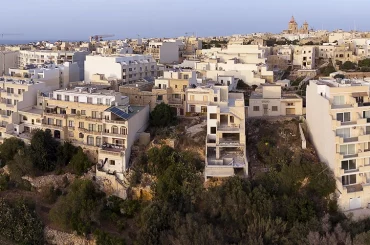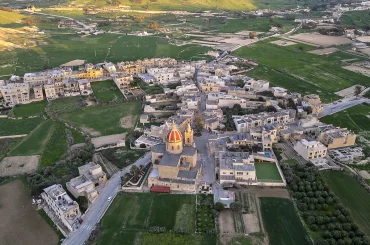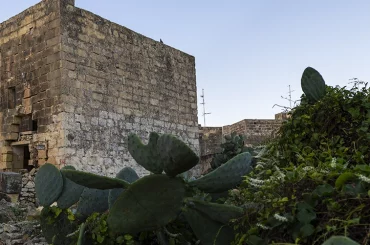I started writing this article several times, each time starting with a different element, and each time doubting whether that revelation or point would most appropriately set the scene – or tone – of the article.
I mean, amid much to say about the Superintendence of Cultural Heritage – I have thought of this article for months – where shall I start and how do I make my observations gel?
So let me start with something that is rather mundane, yet simultaneously telling about the Superintendence’s situation. I have written to the Superintendence on eight occasions in the past eight months – mostly seeking comment or asking questions in preparation for articles – and on four consecutive of those occasions I got slight variations of this stock reply: “The Superintendence acknowledges receipt of your queries and will get back to you at the earliest.”
But then weeks and months would pass, and there would be no additional response whatsoever.

One of those cases concerned an application for a five-storey block of flats in the buffer zone of Ggantija Temples, about which I had published an article about a photomontage that misleadingly showed that the proposed building would not be visible from the temples. I asked the Superintendence if they had a comment to make, or if they would review their advice to the Planning Authority – the Superintendence had told the Planning Authority that, according to the photomontages, the development would have no impact on views from Ggantija (it also expressed concern that approval would lead to other buildings of similar height closer to the temples). Once again, the Superintendence did not respond, and its advice to the Planning Authority remains unchanged.
In another case, also in the buffer zone of Ggantija Temples, neighbours told me that a developer was breaching permit conditions by excavating the bedrock without supervision by an archeologist under terms imposed by the Superintendence. I wrote to Superintendence high officials thrice – two of the emails were addressed to an executive that works in the office of the Superintendent Kurt Farrugia. I asked questions about the monitoring and, at the same time, I said that I wanted to draw their attention to the works. There was no response and no acknowledgement to my emails.
Multiple sources in cultural heritage circles have told me that they are not surprised by all this, and that confidence in the Superintendence has slumped in the past few years.
My latest journalistic investigation shows how awry things have gone. In that investigation, published last week, I revealed that the Superintendence told the Planning Authority that no archeological remains had been found at a development site near a Neolithic site even though the Superintendence’s own archeologists had excavated a Neolithic burial pit, which can be considered as a significant find.

Elsewhere, in the cases within the buffer zone of Ggantija Temples, about which we have heard so much in the past weeks, the Superintendence has failed to push for adherence to the UNESCO’s rules for World Heritage Sites in a consistent manner.
In two of the applications for blocks of flats, it inexplicably dropped its opposition even though the applicant had not made changes to plans that went as far as it, the Superintendence, had initially requested.
In one of those cases, the Superintendent Kurt Farrugia then wrote to the architect to tell him that the director of the World Heritage Centre was insisting on a heritage impact assessment.
At the same time, the Superintendence ignored UNESCO’s rules for impact assessments, or at least screening, in all of the other cases of development applications in the Ggantija buffer zone.
All of this inspires little confidence in the moves by the Superintendence to get one of the development permits (three have been granted) in the buffer zone of Ggantija revoked. The Superintendence filed for revocation three weeks ago; so far there has been no news of any developments since then.
The request itself, signed by Superintendent Kurt Farrugia, asks for “the Planning Authority to temporarily suspend and if necessary even modify or even revoke the aforesaid permission.”
Yet I could find no provision for suspending the permit in the Development Planning Act, a permit can only be revoked or modified.
More troubling, the focus on one of the developments out of six in the buffer zone risks making us lose sight of the larger trend. As already pointed out, three permits have already been granted, and three more are currently at application stage.
UNESCO’s rules on Heritage Impact Assessments are clear. Such assessments – or at least screening – has to be conducted for any development in the buffer zone, and, if any of the individual developments would be limited in impact, then an assessment has to be carried out to assess cumulative impact.

Yet neither the Superintendence nor Heritage Malta have said anything about the other two permits granted.
Heritage Malta has only said in a statement published on its Facebook page that it would back the Superintendence in its revocation request. The agency that manages national heritage properties then also asserted that it had “consistently objected to this development during UNESCO World Heritage Committee discussions.”
Once again, Heritage Malta mentions one of the developments and ignores the others in the buffer zone. And there is something else: I checked the agenda and communication of the World Heritage Committee – the international body that implements the World Heritage Convention – and I found nothing about any discussion having taken place about the development that Heritage Malta referred to.
Perhaps Heritage Malta was instead referring to discussion at the UNESCO World Heritage Sites Technical Committee, which is a Malta-based committee chaired by Malta’s ambassador for UNESCO, Joe Vella Gauci.
It is hard to make any assessment or analysis of this technical committee because it has no visibility in the public sphere – no website, no annual reports, nothing published about its meetings and operations. But what is clear is that this committee, which was set up to ensure Malta upholds its commitments to UNESCO World Heritage Sites, has so far failed in getting the Maltese government to implement UNESCO's rules – particularly by having heritage impact assessments – to assess the impact of developments in the Ggantija buffer zone.
All of this shows that, for whatever reason, those tasked with protection of our cultural heritage are falling short, and much of our heritage is being sacrificed for development. And the most crucial entity among them, the Superintendence of Cultural Heritage, has become – at least in a proportion of cases, including in the all-important Ggantija buffer zone – part of the problem.
Featured image: stone figurines found in one of the Neolithic sites (Copyright: Victor Paul Borg)
I need a small favour...
In 2023 I set a target of seeking a €1,000 in donations for work published here that covers damaging planning. I have published more than a dozen investigations, and various analyses, but I have only gotten a third of the target amount and we're nearing the end of the year. I have to rely on donations for work published here. Give me heart and sustenance this December – and allow me to at least get more than half the modest donation target I set – by donating as little as €5.





